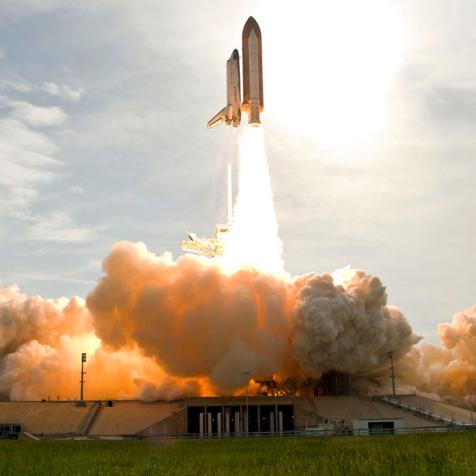
NASA/JPL-Caltech
MOXIE: Carbon Dioxide Turns Into Oxygen on Mars
Recently, Perseverance produced 5.4 grams of oxygen on Mars through an instrument named MOXIE. Can humans live on Mars with the help of this device? Let’s find out.
The NASA Mars rover, Perseverance, successfully extracted 10 minutes of breathable air last month on Mars. On the 60th Martian day of its stay, a “toaster-size” instrument known as MOXIE, Mars Oxygen In-Situ Resource Utilization Experiment, located within the rover, attempted, and succeeded at something that has never been done before.

NASA/JPL-Caltech/R. Lannom
Technicians in the clean room on March 21, 2019, are carefully lowering the Mars Oxygen In-Situ Resource Utilization Experiment (MOXIE) instrument into the belly of the Perseverance rover. MOXIE will "breathe in" the CO2-rich atmosphere and "breathe out" a small amount of oxygen, to demonstrate a technology that could be critical for future human missions to Mars.
96% of Mars' atmosphere consists of carbon dioxide. According to NASA, MOXIE, made of heat tolerant materials, “works by separating oxygen atoms from carbon dioxide molecules, which are made up of one carbon atom and two oxygen atoms. A waste product, carbon monoxide, is emitted into the Martian atmosphere.” MOXIE is designed to generate up to 10 grams of oxygen per hour equivalent to about 20 minutes of air per hour for an astronaut on Mars.

NASA/JPL-Caltech
Mosaic of the Valles Marineris hemisphere of Mars projected into point perspective, a view similar to that which one would see from a spacecraft.
Separate from having breathable air on Mars to “live off the land,” oxygen is an important component of rocket propellant. Once astronauts land on Mars from Earth or the Moon, they will need it to travel back home. If MOXIE were to increase in size and output, it could be life changing for future space explorers, and of course, colonizing the Red Planet.
Meet Ingenuity: NASA’s First Mars Helicopter
Perseverance with Ingenuity strapped to its belly launched on July 30, 2020, from Cape Canaveral Air Force Station in Florida. The Mars Rover and Mars Helicopter safely landed on the dusty surface at 3:55P ET on February 18, 2021, after traveling nearly 292.5 million miles.
Ingenuity Takes First Flight on Mars
In a historic first, Ingenuity successfully flew on the Red Planet. The Mars helicopter was in the air for about 40 seconds.
Journey to the Red Planet with Perseverance and Ingenuity 38 Photos
The Mars Rover and Mars Helicopter launched on July 30, 2020, from Cape Canaveral Air Force Station in Florida. Their mission is to seek signs of ancient life and collect samples from Mars for examination on Earth. From concept to launch to its harrowing landing, here are some of the highlights and the first images sent back to Earth from the rover! Experience more Mars on discovery+. Download and subscribe to stream NASA Mars Landing: Inside the Mission and When We Left Earth.





















